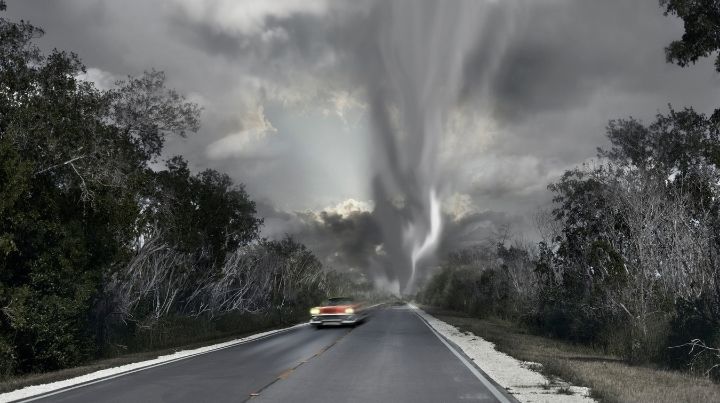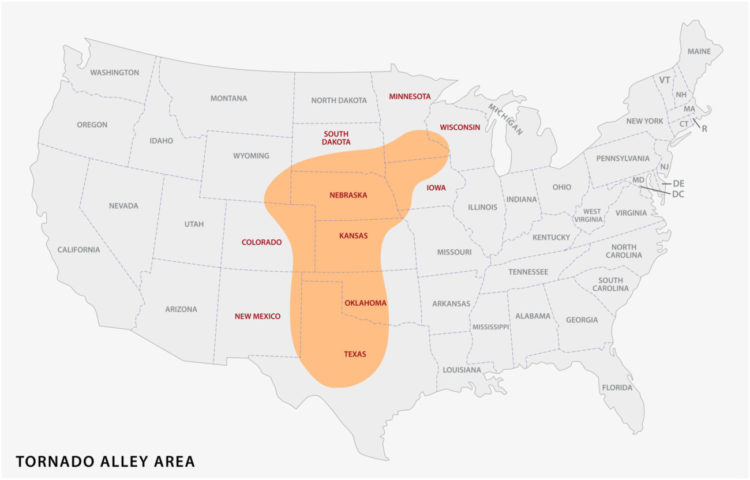How to Survive a Tornado: 6 Tips to Keep Your Family Safe

Many people don’t know how to survive a tornado. They may not be sure where to go or what to do to keep themselves and their families safe. This can lead to many challenges.
It’s hard to know what to do when a tornado hits your neighborhood. You may not have access to a designated shelter, you may be uncertain whether or not it is safe for you and your family, and you might even be unsure where the safest place for you is during this difficult time.
However, many things can help make this difficult situation easier for yourself and those around you. Here are six tips on how to survive a tornado.
These tornado safety tips will cover everything from knowing what to do before the storm hits through after the storm has passed by so that people everywhere can keep themselves and their families safe in any emergency.
How to Survive a Tornado?
1. What to Do When a Tornado Warning Is Issued
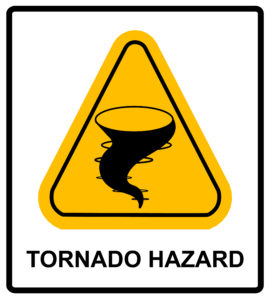 When a tornado warning is issued, it is crucial to take it seriously. A tornado can be deadly, so it is vital to act quickly and decisively to keep yourself and your loved ones safe.
When a tornado warning is issued, it is crucial to take it seriously. A tornado can be deadly, so it is vital to act quickly and decisively to keep yourself and your loved ones safe.
There are a few things that you should do when a tornado warning is issued:
- Find out where the nearest designated tornado shelter is. If there is not a designated shelter near you, go to the lowest level of the building you are in and find an interior room without windows.
- Bathrooms, closets, and other interior rooms provide better protection than a room on an exterior wall.
- If you are driving, quickly find a low-lying area and pull over.
If you hear a tornado siren, whether or not a warning has already been issued, a tornado is likely imminent, and you may have very little time to react.
2. What to Do If You’re Caught Outside During a Tornado
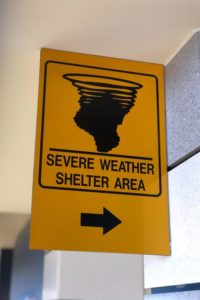
If you are caught outside during a tornado, there are four things that you need to do to increase your chances of survival.
These tips will help keep you safe whether you are in an open area or stuck in your car.
Seek Shelter
The first and most important thing is to seek shelter. If there is a designated tornado shelter, go there immediately. If you are unfamiliar with your area, take note of any signs you may see during your travels that indicate where shelters are located. Situational awareness can potentially save your life!
If you are not in a designated tornado shelter, go to the lowest level of the building that you are in and find an interior room without windows.
Pull over and park your car in a low-lying area if you are driving. You should never try to outrun a tornado.
Get Inside and Stay There Until the Storm Passes
Once you have found shelter, get inside and stay there until the storm passes. Do not go outside, no matter what you hear or see.
The tornado may seem far away, but it can move quickly, and the winds can be extreme. It is not worth risking your life to see what is happening outside.
Find a Low Spot
If you are caught outside during a tornado, find a low spot. This will help protect you from the high winds and flying debris that can occur during a tornado.
Make sure to stay away from trees, power lines, and other objects that could fall on you.
3. What to Do if You’re in a Car During a Tornado Warning
If you are in a car during a tornado warning, there are three things that you need to do to keep yourself safe.
Stay Calm
The most important thing is to stay calm. Panicking will only make the situation worse.
Get Out and Away from the Car
Once you have assessed the situation and determined that it is safe to do so, get out and away from the car. Do not try to take shelter under it.
If you can’t get out, lie down in the lowest part of the car and cover your head with your hands.
Find Safety
If you can’t find shelter, seek protection from high winds by lying down in a ditch or low area.
4. What to Do if You’re in a Building During a Tornado Warning
While there are many things that you can do if you are caught outside during a tornado, what if you are inside a building? Fortunately, there are also many things that you can do to protect yourself from a tornado if you are indoors during an event.
Stay Safe in an Interior Room
If you are in a building during a tornado warning, it is vital to stay safe.
The best place to be is in an inner room without windows. This will protect you from the high winds and flying debris that can occur during a tornado.
If you can’t find an inner room, go to the basement. The basement is the safest place to be during a tornado. It is underground and should be away from windows.
If you can’t get to the basement, go to an interior room on the lowest level of the building.
Move Away from Windows
Flying glass is a danger during tornados. It can injure or kill people who are nearby. If you are in a building during a tornado, make sure to move away from windows.
Make sure you’ve got some shoes on. If you are caught in a tornado, you will need them to protect your feet from the debris that is flying around.
Get into a Corner
If you can’t find an interior room or the basement, go to the corner of a room. The corner of the room is the safest place during a tornado.
The corner is usually away from windows and provides greater structural strength.
Cover Your Head
Covering your head is one of the most important things you can do if you are in a building during a tornado.
It will protect your head and eyes from the flying debris that can occur during a tornado. Make sure to cover your head with your hands if you can’t find anything else to use.
5. What to Do After the Tornado Passes
After the tornado passes, it is crucial to take care of yourself and those around you. Here are a few things that you should do:
Check for Injuries and Provide Medical Help if Necessary
The first thing that you should do is check for injuries. If you or someone else is injured, make sure to get them medical help as soon as possible.
Assess the Damage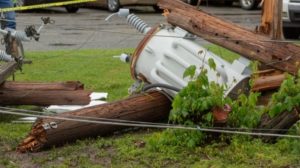
Once you have checked for injuries, it is time to assess the damage.
Some tornado damages to look for are fallen power lines, a gas leak from ruptured gas lines, broken glass, fallen trees. Do not go near downed power lines for any reason. If you are able, turn any potentially dangerous utilities off, such as propane, natural gas, electricity, etc.
Make a list of tornado damages and take pictures or videos of the damage. This will help with insurance claims and with getting help from aid organizations.
Help Those Affected by the Tornado
After the tornado passes, it is vital to help those affected. Here are a few things that you can do:
- Donate Money: One of the best ways to help those affected by a tornado is to donate money. This will help with the rebuilding process.
- Donate Supplies: Another way to help is to donate supplies. This will help those who have lost everything in the tornado.
- Volunteer Your Time: The best way to help is to volunteer your time. This will help those who are rebuilding their lives after the tornado. You can find opportunities to help here.
FAQ – How to Survive a Tornado
What Should I Do if the Sirens Are Going off Near My Home or Workplace?
The first thing that you should do is evacuate into a storm shelter, basement, or interior room without windows.
Stay away from windows and open spaces. Also, cover your head with your hands to protect yourself from flying debris.
Can I Survive in My Car During a Tornado?
Unfortunately, no one can survive inside of their vehicle during a time of violent tornadic activity.
If you are caught outside in your car when the tornado strikes, take shelter next to your vehicle.
Put your feet against the car doors and put your body against the side of the car so that it acts as protection from flying debris.
Can I Survive in My Building During a Tornado?
Yes, you can survive in your building during a tornado.
The best way to do this is to go to the basement and take shelter with others in the building. If there isn’t a basement in your building, then make sure to find an interior room on the lowest level of the structure.
Cover yourself with something if possible so that you don’t get injured by flying debris.
How Will I Know If There Is a Tornado Warning?
If any one of these is happening or has happened, then it is time for you to seek shelter immediately: large hail, high winds, abnormally dark clouds, or tornadoes being spotted nearby.
What are Tornado Watches?
The National Weather Service will issue a tornado watch if tornados are possible in your area. Watch the news or weather channel for updates.
What are Tornado Warnings?
A tornado warning will be issued if a tornado has been sighted nearby or it is expected that one could occur. Take shelter immediately.
Who Is Most Likely To Be Affected by Tornadoes?
The people most likely to be affected by tornadoes are those with homes in low-lying areas or mobile home parks. These homes can easily get blown over in the high winds that come during a tornado.
What is Tornado Alley?
Tornado Alley is a tornado-prone area in the United States with the highest frequency of tornadoes. It extends from Oklahoma and Texas through Kansas, Nebraska, and South Dakota.
What are Tornado Warning Signs?
There are many tornado warning signs that you can watch for. They include tornado sirens, wall clouds, large hail, high winds, abnormally dark clouds, and nearby tornado spottings.
How Long Does a Tornado Usually Last?
A tornado usually only lasts for around 10 minutes before it is gone or seriously weakened. A few may be able to last up to 30 minutes, but this is the exception, not the norm.
What is a Tornado Safe Room? 
A tornado safe room is a reinforced structure on the interior of your home. It is usually built with solid concrete, and it has been known to save many lives during a tornado, including those who have had no previous sheltering plan before a storm strikes.
When is Tornado Season?
Tornado season is between March and June. These months tend to have the most tornadic activity, but they can occur year-round.
When Are Tornadoes Most Likely?
Most tornadoes are most likely to occur during the afternoon and evening hours when the temperatures are highest. They usually don’t happen at night or early in the morning.
What Should You Not Do During a Tornado?
There are three things you should never do during a tornado. They are: Don’t lose your cool, do not go outside to look at the funnel cloud, and do not try to outrun it in your car.
What is an NOAA Weather Radio?
An NOAA radio is a small radio that gets all of its information from the National Oceanic and Atmospheric Administration. It will alert you to any watches or warnings in place for your area as soon as the NWS releases them.
How Many Tornado Fatalities Are There Each Year?
On average, 80 people are killed from tornadoes each year. Most of these fatalities occur in mobile homes and vehicles.
The Bottom Line of Tornado Safety
Tornadoes are one of the most deadly natural disasters in North America.
They can cause severe damage and destruction, but thankfully, you can do a lot to protect yourself from them if they occur near your home or workplace.
How to Survive a Tornado Additional Resources:
- Hurricane Preparedness: Tips to Survive the Storm
- Suddenly have the urge to watch Twister? Rent it here!
- What Is Solar Maximum, and Why Should I Care?
- Disaster Aftermath: Disaster Situations Aren’t Always Isolated Events
Stay safe,

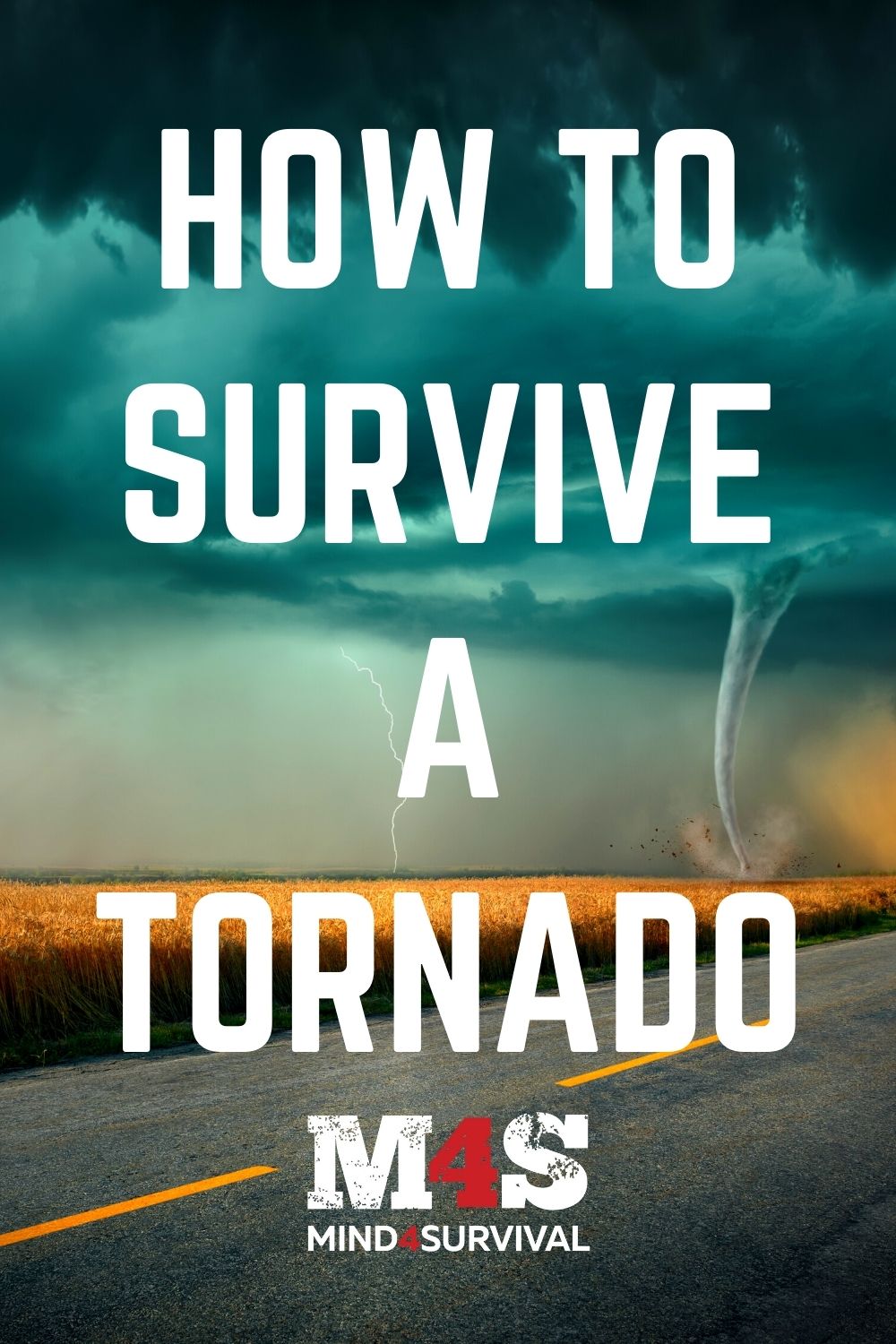
Don't Miss Out!
Join the thousands of people who rely on Mind4Survival preparedness advice by subscribing to our FREE newsletter.
- Practical preparedness information
- Zero Spam
- < 0.25% of people unsubscribe




Join Mind4Survival!
Stay informed by joining the Mind4Survival! 100% Secure! 0% Spam!
Follow Us!
Affiliate Disclosure
Mind4Survival is a free, reader-supported information resource. If you make a purchase through our link, we may, at no cost to you, receive an affiliate commission.

